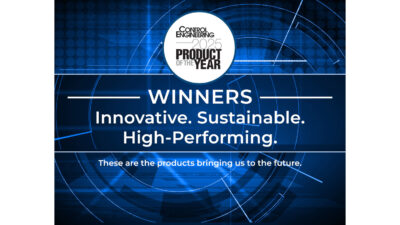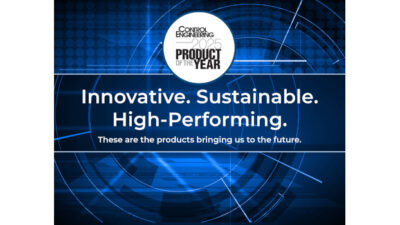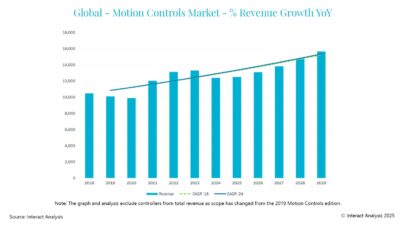The objectives of the control system upgrade request were clear: make process flow diagrams easier to read, increase security, and improve end-user configurable inputs and alarms. System integrator Magnum Engineering & Controls was put to the test when a global Fortune 500 Company asked for help to improve its semiconductor manufacturing process.
The objectives of the control system upgrade request were clear: make process flow diagrams easier to read, increase security, and improve end-user configurable inputs and alarms. System integrator Magnum Engineering & Controls was put to the test when a global Fortune 500 Company asked for help to improve its semiconductor manufacturing process. “Our customer sells equipment that is used in wafer manufacturing and chip-making processes,” says Rick Hannasch, president of Magnum Engineering. “Each step in the process requires that special gases or fluids are introduced at precise times, durations and concentrations. Our part of the project was to build the control boxes for the equipment allowing operators to monitor the processes and change specific parameters as needed.”
User demands
The customer wish list was short and direct:
-
Provide higher resolution and greater detail on process flow diagrams;
-
Increase the number of security levels from 5 to 10; and
-
Add functionality to user configurable inputs and alarms.
Adding this functionality, however, would overload the existing human machine interface (HMI) system. HMI functions were divided between the existing HMI system (hardware and software) and the PLC controlling the process. The existing HMI simply provided a display of process parameters. Operators made control inputs through the PLC, which ran security and configuration applications.
“The added functionality would have yielded an unmanagable PLC program,” Travis Manning, project manager at Magnum explains.
The goal in replacing the HMI hardware and software was to provide the requested resolution and detail while dramatically reducing PLC program complexity by offloading the security and configuration functions to the HMI.
Magnum engineers looked at a number of HMI products before making their final choice. One simply cost too much. Another—a direct descendant of the system’s original HMI—was deemed to require too much custom programming to be viable. Finally, they opted for an HMI hardware and software package from Beijer Electronics.
User-friendly configuration
Although relatively new to the U.S. market, Swedish control component manufacturer Beijer Electronics says it is among world leaders in HMI technology.
“After the test [of the Beijer HMI] we were impressed by the user-friendly, intuitive software, called Information Designer. It features a wide selection of ready-made objects and functions that make it simple to create applications by just pointing and placing on the screen,” Manning continues.
Manning also appreciated the ability to configure applications with exactly the same view as the operator will experience. “This allows developers to visualize how the application will work in real life,” he says. “Another time-saving feature is ‘off-line simulator,’ which makes it possible to test an application instantly without having the HMI connected.”
Deciding factor: tech support
“So we had two product brands as possible solutions, one already accepted by our customer, and one less known, yet with impressive functionality and software,” says Hannasch. “Both brands offered state-of-the-art operator terminals with features and benefits that allowed us to recommend both products. Our final decision was based on the level of technical support, which we viewed as critical to the success of a project of this magnitude.”
Throughout the evaluation process, Beijer Electronics engineers and programmers played an active role in the conversion and guaranteed support for understanding and mastering the development software. “This ensured a smooth transition from the previous terminals to the Exter terminals,” Hannasch adds.
Next step
When the conversion was complete, all customer goals for performance enhancement were achieved—exceptional detail/resolution on process flow diagrams, advanced security functions and increased functionality on configurable inputs and alarms. As a bonus, the PLC code was cleaned up by including more functionality in the HMI.
The new HMIs will make it easier to make future upgrades. “Next in line is the possibility to embed ASCII text, originating from the PLC, into HMI messages,” says project manager Manning, adding that he knows a support team is working on that feature.
Modular battery charger
Equinox Switchmode rapid battery charger from Ametek Prestolite Power is intended for electric vehicle and material handling environments. The 18-kw unit is said to offer efficiency of >90%, active power factor correction (>0.95), and total harmonic distortion (&10%) lower than ferroresonant- or silicon-controlled-rectifier-based (SCR) power supply systems. Intelligent modular design incorporates state-of-the-art IGBT technology that controls the charger’s functions and minimizes downtime. Cost-effective planar transformer, says the company, provides better cooling for longer component life and more consistent manufacturing for greater reliability. www.prestolitepower.com
Ametek Prestolite Power
ELC PLC features no-rack design
Eaton Cutler-Hammer ELC (electronic load controller) programmable logic controller from FactoryMation LLC includes built-in I/O connectors on its CPUs to operate as a standalone controller and can add expansion modules to its no-rack design by snapping them into mating connectors. ELC controllers are available in 10, 12, and 14 I/O configurations from $93 with two serial ports, pulse input/output motion control, autotune PID, and pluggable terminal blocks in a compact 1-in.-wide package. www.factorymation.com
FactoryMation LLC
| Author Information |
| Rick Hannasch is the president of Magnum Engineering. |



